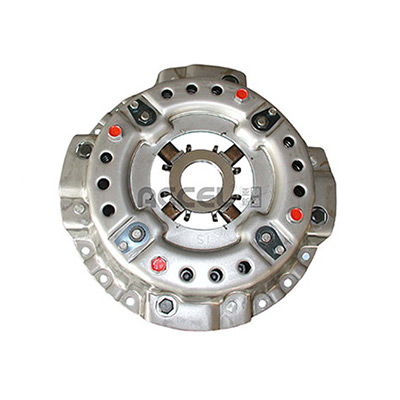- Arabic
- French
- Russian
- Spanish
- Portuguese
- Turkish
- Armenian
- English
- Albanian
- Amharic
- Azerbaijani
- Basque
- Belarusian
- Bengali
- Bosnian
- Bulgarian
- Catalan
- Cebuano
- Corsican
- Croatian
- Czech
- Danish
- Dutch
- Afrikaans
- Esperanto
- Estonian
- Finnish
- Frisian
- Galician
- Georgian
- German
- Greek
- Gujarati
- Haitian Creole
- hausa
- hawaiian
- Hebrew
- Hindi
- Miao
- Hungarian
- Icelandic
- igbo
- Indonesian
- irish
- Italian
- Japanese
- Javanese
- Kannada
- kazakh
- Khmer
- Rwandese
- Korean
- Kurdish
- Kyrgyz
- Lao
- Latin
- Latvian
- Lithuanian
- Luxembourgish
- Macedonian
- Malgashi
- Malay
- Malayalam
- Maltese
- Maori
- Marathi
- Mongolian
- Myanmar
- Nepali
- Norwegian
- Norwegian
- Occitan
- Pashto
- Persian
- Polish
- Punjabi
- Romanian
- Samoan
- Scottish Gaelic
- Serbian
- Sesotho
- Shona
- Sindhi
- Sinhala
- Slovak
- Slovenian
- Somali
- Sundanese
- Swahili
- Swedish
- Tagalog
- Tajik
- Tamil
- Tatar
- Telugu
- Thai
- Turkmen
- Ukrainian
- Urdu
- Uighur
- Uzbek
- Vietnamese
- Welsh
- Bantu
- Yiddish
- Yoruba
- Zulu
نويابىر . 08, 2024 03:54 Back to list
Exploring the Benefits and Innovations of Automotive Seat Belt Technology
The Evolution and Importance of Auto Belts in Modern Vehicles
In the realm of automotive engineering, few components hold as significant a role in ensuring safety and comfort as the auto belt. From the humble beginnings of seatbelts to the advanced safety features found in contemporary vehicles, the evolution of auto belts is a testament to advancements in technology and a growing awareness of road safety.
The Historical Context
The concept of the seatbelt dates back to the early 19th century, originally designed for use in airplanes. It wasn't until the mid-20th century that automobile manufacturers began to incorporate them into cars. The first modern lap belt was introduced in 1959 by Volvo, a company that has long championed vehicle safety. This innovation marked a pivotal moment in automotive history, as it began a trend toward safety features that would become standard in vehicles around the world.
As research into road safety advanced, it became clear that seatbelts significantly reduced the severity of injuries in accidents. The National Highway Traffic Safety Administration (NHTSA) reports that seatbelts reduce the risk of fatal injury to front-seat passengers by 45% and the risk of moderate to critical injury by 50%. These statistics provided a compelling case for legislation mandating seatbelt use, leading to laws that have saved countless lives since their implementation.
The Technical Development
Today, auto belts are more than simple straps designed to secure passengers in their seats. The modern seatbelt has undergone substantial technological improvements, enhancing both functionality and safety. For instance, the three-point seatbelt system, which has been widely adopted, features a lap belt and a shoulder strap. This design distributes the force of a collision across stronger parts of the body, minimizing injury risk.
In addition to the standard seatbelt design, the automotive industry has introduced features such as pretensioners, which tighten the belt upon impact, and load limiters, which allow a controlled amount of belt slack to reduce the forces experienced by passengers during a crash. Moreover, the incorporation of sensor systems can detect the presence of passengers and adjust the seatbelt accordingly, ensuring maximum protection at all times.
auto belt

The Role in Modern Vehicles
With the advent of advanced driver-assistance systems (ADAS) and increasing integration of technology in vehicles, auto belts have adapted to work synergistically with these new innovations
. For instance, in vehicles equipped with automatic braking or lane-keeping assist technology, the seatbelt plays a crucial role in ensuring that passengers remain secure during sudden maneuvers.Furthermore, the integration of smart technology into auto belts is on the rise. Some manufacturers are exploring the use of buckle sensors that monitor if a seatbelt is fastened and send alerts to the driver, encouraging compliance for all occupants. Additionally, smart belts that can integrate with in-car entertainment systems to provide alerts or feedback on driving habits are being developed, promoting awareness and responsible behavior.
The Importance of Compliance
Despite the advancements in auto belt technology, compliance remains a vital issue. Many studies highlight a persistent trend of seatbelt non-use, particularly among certain demographics. Education campaigns aimed at promoting seatbelt use have proven effective, but ongoing efforts are necessary to instill the habit of buckling up.
The role of auto belts in reducing fatalities and serious injuries in crashes cannot be overstated. While vehicles are becoming safer through improved design and technologies, the most effective safety measure remains simple wearing a seatbelt.
Conclusion
In conclusion, the evolution of auto belts reflects not only technological advancements but also a cultural shift towards prioritizing safety in vehicle design and operation. As we move forward, continuous education on the importance of using seatbelts, coupled with further innovations in safety technology, will be critical in reducing road traffic injuries and fatalities. The auto belt may seem like a simple feature, but its significance cannot be underestimated in the ongoing quest for safer roads worldwide.
-
Korean Auto Parts Timing Belt 24312-37500 For Hyundai/Kia
NewsMar.07,2025
-
7PK2300 90916-T2024 RIBBED BELT POLY V BELT PK BELT
NewsMar.07,2025
-
Chinese Auto Belt Factory 310-2M-22 For BMW/Mercedes-Benz
NewsMar.07,2025
-
Chinese Auto Belt Factory 310-2M-22 For BMW/Mercedes-Benz
NewsMar.07,2025
-
90916-02660 PK Belt 6PK1680 For Toyota
NewsMar.07,2025
-
drive belt serpentine belt
NewsMar.07,2025

